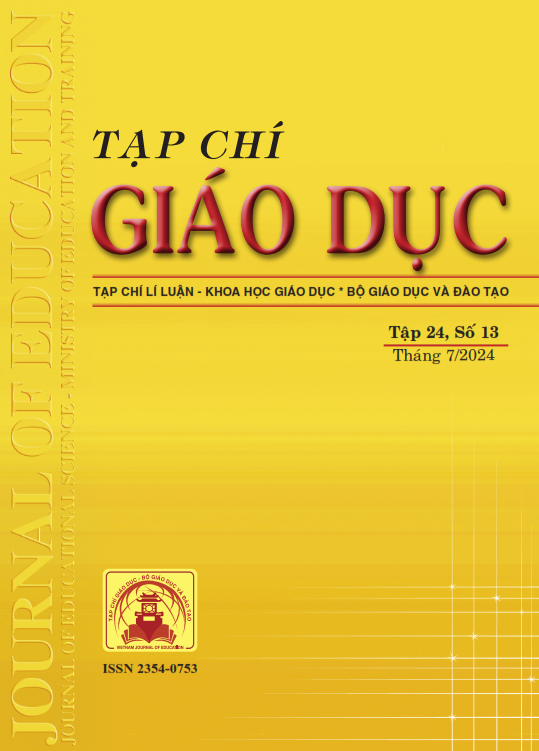Sử dụng phương pháp trải hình trong dạy học nội dung “Điểm, đường thẳng và mặt phẳng trong không gian” (Toán 11) theo định hướng giáo dục STEM
Tóm tắt
STEM education has recently become an integral part of the education system, emphasizing the development of essential skills for today's students. In the field of geometry, the technique of making a net of solid figures is particularly useful in solving complex problems in algebra and geometry, from basic problems to advanced applications in computer science and theoretical physics. Applying this technique in teaching geometry not only helps students better understand complex geometric concepts but also encourages creativity and discovery in the learning process. The study presents the process of teaching Mathematics according to the STEM education approach and illustrates this process in teaching the content “Points, lines and planes in space” (Math 11) using the technique of making a net of solid figures. Integrating the very technique in STEM education is opening up new and exciting opportunities for teaching and learning; helping students master knowledge and develop important soft skills such as teamwork, logical thinking and flexibility in problem solving.
Tài liệu tham khảo
Baron, J. B., & Sternberg, R. J. (1987). Teaching thinking skills: Theory and practice. New York: Freeman.
Bộ GD-ĐT (2018). Chương trình giáo dục phổ thông môn Toán (ban hành kèm theo Thông tư số 32/2018/TT-BGDĐT ngày 26/12/2018 của Bộ trưởng Bộ GD-ĐT).
Bộ GD-ĐT (2020). Công văn số 3089/BGDĐT-GDTrH ngày 14/8/2020 về việc triển khai thực hiện giáo dục STEM trong giáo dục trung học.
Bộ GD-ĐT (2022). Hướng dẫn xây dựng kế hoạch bài dạy STEM cấp trung học phổ thông, chương trình phát triển giáo dục trung học giai đoạn 2.
Bùi Minh Đức (2017). Sử dụng phần mềm GeoGebra hỗ trợ dạy học giải bài toán hình học không gian bằng thủ pháp “trải hình”. Tạp chí Giáo dục, số đặc biệt tháng 3, 122-123.
Fan, S., & Ritz, J. (2014). International views of stem education. In: de Vries, M.J (Ed.) In Proceedings PATT-28 Conference, Orlando, (pp. 7-14).
Herro, D., Quigley, C., Andrews, J., & Delacruz, G. (2017). Co-Measure: developing an assessment for student collaboration in STEAM activities. International Journal of STEM Education, 4(1), 1-12.
Margot, K. C., & Kettler, T. (2019). Teachers’ perception of STEM integration and education: a systematic literature review. International Journal of STEM Education, 6(1), 1-16.
Mark, S. (2009). STEM, STEM Education, STEMmania. The Technology Teacher, Virginia Polytechnic Institute And State University.
Tsupros, N., Kohler, R., & Hallinen, J. (2009). STEM education: A project to identify the missing components. Intermediate Unit 1 and Carnegie Mellon, Pennsylvania.
Tải xuống
Đã Xuất bản
Cách trích dẫn
Số
Chuyên mục
Giấy phép

Tác phẩm này được cấp phép theo Ghi nhận tác giả của Creative Commons Giấy phép quốc tế 4.0 .












